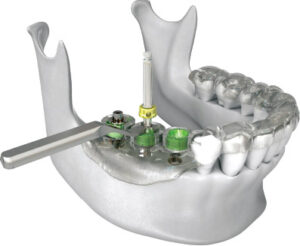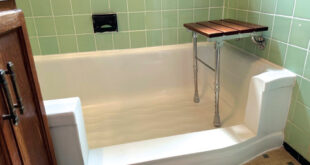By Lee R. Cohen, D.D.S., M.S., M.S. –
 Dental implants can help patients regain their ability to chew and smile with confidence. The implant itself supports the crown or crowns (the chewing part of the tooth) allowing the new “teeth” to be anchored. New technologies are now available that aid your surgeon in performing these procedures in an extremely conservative and comfortable fashion.
Dental implants can help patients regain their ability to chew and smile with confidence. The implant itself supports the crown or crowns (the chewing part of the tooth) allowing the new “teeth” to be anchored. New technologies are now available that aid your surgeon in performing these procedures in an extremely conservative and comfortable fashion.
Traditional Implant Placement:
Implants are usually planned by the surgeon using a combination of a clinical evaluation and a careful examination of dental x-rays. These x-rays are helpful, but have the limitation of only showing a 2-dimensional view of the area. Typically the “width” and exact locations of important structures such as nerves cannot be determined.
CT scans offer a significant improvement in the detail provided to the surgeon when planning the procedure. In-office CT scanning takes typically less than a minute and involves sitting in a chair while the unit rotates around your head. The scan offers a 3-D view of the structures being evaluated. The views are similar to slicing a loaf of cinnamon raisin bread and seeing the exact detail of each slice. In the CT scan, nerves, sinuses and other important anatomy can be identified with a high degree of precision. This information allows the procedure to be planned in the most conservative and safest manner. Once the treatment has been planned, the procedure is performed by opening the gum tissue and inserting the implant into the desired location. Sutures are typically used to close the surgical area.
Computer CT Guided Implant Surgery:
Guided Implant Surgery allows your procedure to be “performed” in advance of the actual surgery. The majority of the work occurs when you are not in the dental office. Once the CT scan is taken, advanced computer programs are used to “perform the surgery” and place implants within the 3D representation of your mouth in the safest and most ideal positions.
These implant positions can be shared in advance with your general dentist so that the overall treatment is ideal. In a very oversimplified example, the programs used are similar to a very advanced video game with full representation of your jaws and all the implants available to an exact scale. Ideal placement location and implant size selection can be determined using this software.
A surgical guide is created that only allows the surgeon to place the implant in the predetermined locations. The technology lets the surgeon perform the procedure without the need for typical incisions and suturing. This conservative approach typically leads to decreased pain, swelling and a more streamlined recovery. Improved safety can often be achieved around nerves and sinuses with the use of this procedure. The state-of-the-art procedure can be used for patients requiring 1 implant to patients in need of full mouth rehabilitation.
This technology has drastically changed the way dental implant surgery can be planned and performed with improved preciseness and typically decreased pain. The procedure is not applicable for every case and needs to be determined by your surgeon on an individual basis. Shorter treatment times, increased safety and decreased pain are patients’ most frequent comments regarding this type of therapy.
Lee R. Cohen, D.D.S., M.S., M.S.
4520 Donald Ross Road, Suite 110
Palm Beach Gardens, FL 33418
Phone: 561-691-0020
www.pbcperio.com
 South Florida Health and Wellness Magazine Health and Wellness Articles
South Florida Health and Wellness Magazine Health and Wellness Articles



